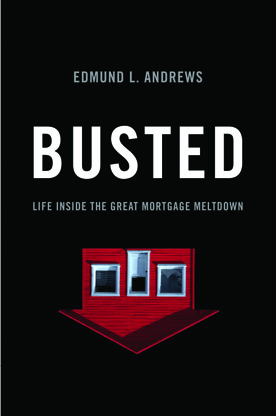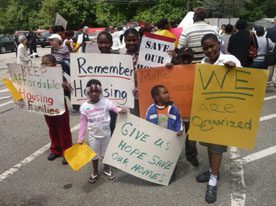All three books conclude by addressing housing crisis solutions. Immergluck speaks to the many policies and solutions supported by the affordable housing, fair lending, and civil rights communities in the past year, that is, allowing bankruptcy judges to modify mortgages debts, expanding the scope and enforcing the CRA, enacting new state regulations to protect against predatory lending, and a full revamping of federal regulation to consumer protection and mortgage lending. Andrews critiques the Federal Reserve’s response to the crisis but also speaks to the increased spending and declining savings by Americans as a greater risk than just the housing crisis. In Andrews view, the over-reliance of housing equity for wealth and the decline of savings (and defined benefit retirement plans) are troubling signs of more economic hardship to come.
Katz makes the strongest argument when she writes that homeownership should not be the primary goal of public policy. In particular, she calls for more federal oversight in the lending, financial, and mortgage industry and setting reasonable limits on lending — a goal which will be difficult given the $2 billion in lobbying by the real estate and finance industries. Her recommendation is for more housing policy to be oriented toward providing sustainable and safe housing for renters and homeowners, a point with which we cautiously agree. Katz’s viewpoint naturally leads to a discussion as to who should be homeowners. Our fear is that given the already contentious and misinformed attacks on affordable housing policies and legislation like CRA in the wake of the housing crisis, this debate would be manipulated to further demonize “those people” who took out subprime loans as the source of the housing crisis. The debate would be fuel to the fire, aiding those who would like to justify excluding credit to those deemed unworthy of homeownership, which could produce another era of redlining in marginalized communities.
We need to widen the scope of these arguments in a couple of ways. First, there needs be an intentional and affirmative process to address the problem of a dual, racialized credit market. While strengthening anti-discrimination laws will help, this is not enough. The goal is not to eliminate discrimination but to eliminate the dual credit market and housing markets. Second, we need to think about housing as one of our principal gateways to opportunity in our society and not just as a place to live. This reasoning is the rationale behind the “opportunity-based housing” model supported by the Kirwan Institute. For many, homeownership is not just an investment in property or a way to build equity, but a means to gaining access to the opportunities available in specific neighborhoods such as good schools or accessible jobs. In many ways, Andrews’ book captures this phenomenon because when he takes out a loan, he does so not just to become a homeowner, but to gain access for his family to the amenities that came along with his suburban Maryland neighborhood. Access to high-opportunity neighborhoods is denied for too many families, often leaving a heavy racial footprint. One of the challenges for many homeowners of color has not just involved unsustainable credit, but homeownership that puts them in communities of declining opportunity. Housing policy should be affirmatively linking communities and individuals to areas of high opportunity, through sustainable forms of credit. While Immergluck, Katz, and Andrews make implicit suggestions along these lines, their books, and more importantly, our society, would be stronger by making these goals explicit.





Thank you so much for sharing this interesting post. auto insurance quote
This is a huge problem that we really need to get a handle on. I think the blame should land on the banks and not the people because its the banks that make the loan decision.
Thanks Claudia Mayer
Florida Immigration Lawyer
This is one of the good articles you can find in the net explaining everything in detail regarding the topic. I thank you for taking your time sharing your thoughts and ideas to a lot of readers out there. Beertender B95
Now, going into 2010, it’s hard to imagine that it’s only been just over a year since the economic impact of our nation’s housing crisis became clear to many Americans, producing a series of drastic economic aftershocks that shook the domestic and global economies. Spy PhoneTroubled Asset Relief Program, Fannie Mae and Freddie Mac, CRA, Bear Stearns, subprime loans, and mortgage securities dominated the news, the final months of the presidential campaign and went from obscure topics to dinner table conversation.
I think that is inhumane… We all deserve to live… and while we live, we should do things that are beneficial like doing something profitable to support our family… like me, I conduct a phone sales training program not just for myself but to help other people succeed in telemarketing.
Fantastic Topic to discus,I think everyone had the ability to spend his life with it’s own way.It’s up to the person,he done good or wrong.Thanks for the information.I also visit your site in future for more details.
https://avointyopaikka.fi/